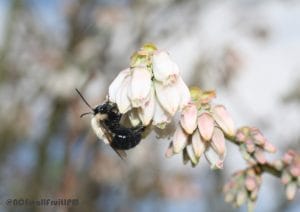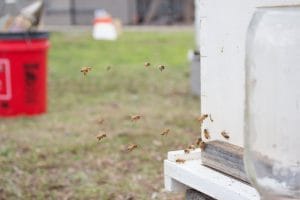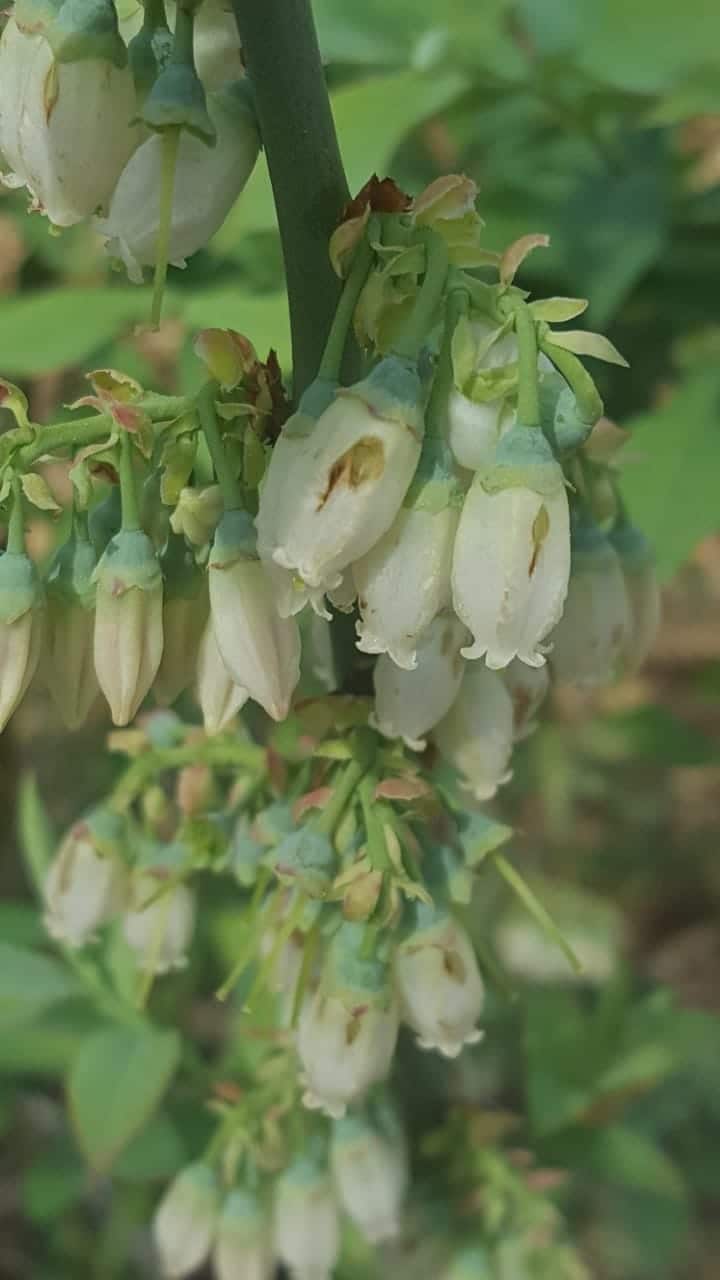With the recent cold damage to the commercial blueberry crop in South Georgia, the blueberries in our community, school, or home gardens are all the more precious this year. As a result, it seems like gardeners are paying more attention to their blueberry flowers. I have gotten several emails asking about slits appearing in the sides of blueberry flowers. This is not unusual and it probably happens every year, gardeners just don’t notice it.
The slits are made by carpenter bees who are “robbing” the flower. They chew slits in the sides of the flowers and get the nectar without having to go into the flower. A result of robbing is that the bees don’t leave or pick up any pollen. Pretty sly bees, right? Research shows that this action still results in some pollination, it is just not ideal. Other bees may use these slits as well to retrieve whatever nectar is left.
Blueberry Pollen is Heavy
Blueberry pollen is heavy and sticky. It does not move around easily and isn’t wind blown. The blueberry flower shape does not lend itself to adequate self-pollination so pollinators are needed even with the self-pollinating types of blueberry plants.

Bee Pollination
Several native bee species pollinate blueberries including the Southeastern blueberry bee. This bee also pollinates several flower types that bloom at the same time. The male Southeastern blueberry bee has a yellow face.
The smaller native bees are shown to be superior pollinators in these plants. You will also see bumble bees in the blueberry patch. They vibrate their flight muscles inside the flower aiding in pollen exchange, flower sonication. Also, honey bees are often brought into blueberries fields to aid in pollination. To learn more about bees in the blueberry patch visit North Carolina State’s Blueberry Pollinators .

I enjoy pulling up a chair near my blueberry plants to watch the pollinators at work. Try it and you will be amazed at the different insects you see.
If you don’t have blueberries in your community or school garden, why not? They are a fantastic addition to the garden. Being perennial shrubs they add a nice permanent shape to the space. School gardeners should look at later season varieties.
Happy Gardening and I wish you all a very large blueberry harvest this year!
- ParSLAY the Day! - June 12, 2024
- 6th Annual Great Southeast Pollinator Census - May 28, 2024
- Are you ready for Pepper Palooza? - July 5, 2023

Great article. Can you tell me more about Southeastern blueberry bee?
Certainly, Southeastern blueberry bees are fascinating. They look like bumble bees but are smaller and they are solitary ground bees. Nesting in bare, loose, sunny soil the female creates a brood chamber for only one larva. The bees live about 3-5 weeks and only produce one generation a year.
The mystery of the slits is solved! Thanks for a wonderful article!